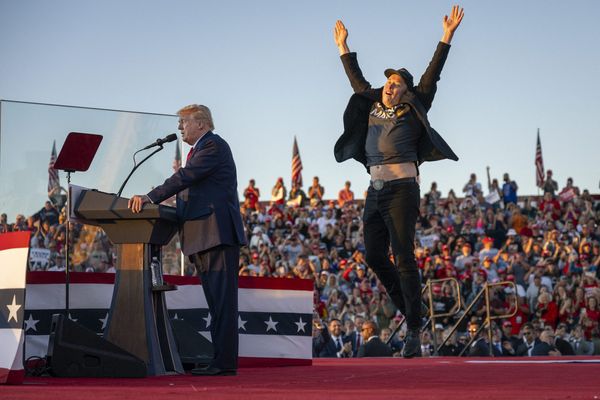
When Congress passed the Protecting Americans from Foreign Adversary Controlled Applications Act, it effectively banned TikTok from hundreds of millions of American users. Lawmakers said they were trying to prevent the spread of dangerous lies and protect Americans’ personal data from being accessed and “weaponized” by the Chinese government.
President Joe Biden signed the act into law on April 24, 2024, giving TikTok nine months to find a new U.S. owner — or face being shut down in the United States.
What is TikTok? Who owns it?
TikTok is a popular social media app that lets users discover, create, and share videos that range in length from three seconds to 10 minutes. These videos capture everything from funny pet moments to makeup and fitness tutorials, lip sync battles, and choreographed dance moves. There are 170 million TikTok users in the United States alone.
TikTok is privately owned by the China-based ByteDance, an internet giant that Forbes has called “the world’s most valuable startup.” Estimated to be worth $215 billion, TikTok’s global operations makeup half of ByteDance’s revenues; the rest comes from its 40 other businesses, including Douyin, a video platform used extensively in China, Lark, which monitors office productivity, and Cap Cut, a video editing app.
Related: 'Shark Tank' net worth: Who's the richest Shark?
While ByteDance is based in China (Beijing, to be precise), TikTok’s headquarters are located in Los Angeles and in Singapore, where CEO Shou Zi Chew resides.
According to data from TikTok, the app is used by over half of America’s population, including more than seven million small businesses. But in the few short years since its 2016 launch, TikTok has become more than a source of entertainment or even income — now deeply entrenched into everyday life.
According to a November 2023 survey from the Pew Research Center, more than 30% of Generation Z, who are between the ages 18–29, regularly get their news from TikTok, and 40% use the platform, along with Instagram, as their main search engine.
NBC News reported that TikTok creators unanimously oppose a ban, and, in addition to calling their Congressional representatives, more than a hundred thousand signatures have been added to the Change.org petition “Stop the TikTok ban.”
View the original article to see embedded media.
And while the U.S. government’s deadline for ByteDance to divest TikTok is January 19, 2025, users probably won’t wake up the next morning to find the app deleted from their phones or police at their doors to if they try to download it.
Reason: The stage has already been set for a long courtroom battle. In May 2024, ByteDance filed a legal challenge claiming that the law violates the First Amendment rights of TikTok’s American users, with many believing the case could go as high as the Supreme Court.
In the meantime, we take a look at how TikTok got started and why it gained traction so quickly, as well as its many controversies. We also uncover who’s made a bid for the company in the past — as they might help shed light on what will happen next.

CFOTO/Future Publishing via Getty Images
A 60-second history of TikTok
The first short-form video app to gain mainstream appeal wasn’t TikTok; it was Vine. Launched in 2013, Vine allowed users to create and share six-second videos from their smartphones, gaining 40-million users in its first year alone. Eventually, Vine was acquired by Twitter.
Next came Snapchat Stories, a popular offshoot of Snapchat’s image-sharing app that let users build chains of shared content that disappeared after 24 hours. The company integrated more advanced advertising technology into this app, which made it more profitable. Snapchat Stories was also the first app to introduce the “auto advance” feature, where content moved seamlessly from story to story.
The evolution continued with the Chinese-based Musical.ly, introduced in 2014. This app let users make and share lip-sync videos. This app came with a lot more bells and whistles, including a wide selection of music to choose from as well as a social network for user connection. Other innovative features included the “duet” function where two people recorded videos to the same song that were spliced together online.
Musical.ly captured the attention of ByteDance, which had launched Douyin, a similar app for its Chinese market, in September 2016. Douyin exploded in popularity, gaining over 100 million Chinese users in less than a year. It dominates the Chinese market.
More consumer finance:
- Why are groceries so expensive? A look at post-pandemic food price inflation
- The top 5 Vegas residencies of all time
- How much does it cost to die? Cremation, burial plots, caskets, urns, headstones & more
ByteDance bought Musical.ly for $800 million in 2017 with the plan to launch it as the global version of Douyin. By the summer of 2018, it had funneled all of Musical.ly’s content and user accounts into the new app, called TikTok.
TikTok took off like a rocket ship. By 2021, it had become the most successful app in the world, with more than one billion users; in 2023, the company stated that it drove $15 billion in revenues for U.S. small businesses alone.
Axios said in March that TikTok's U.S. revenue may be $16 billion to $18 billion. The report said the U.S. business may be unprofitable.
Why is TikTok so unique?
TikTok’s behind-the-scenes machinations are what make it so powerful — and successful. Its algorithm has the ability to understand what users like more quickly than other apps.
TikTok uses this to maximum benefit on the app’s “For You” page, where the algorithm suggests content to users based on what they have previously engaged with. In other words, the algorithm doesn’t only display what’s popular; it creates a personalized content experience based on a user’s likes and preferences — even what their interests are at certain times of the day.
View the original article to see embedded media.
TikTok controversies
TikTok’s algorithm may have fueled its astounding success, but it also raised concerns about whether the app was safe for young and vulnerable audiences.
An internal document obtained by The New York Times revealed that TikTok’s algorithm optimized for user retention and time spent on the app, creating an addiction of sorts, which could quickly turn dangerous if the content the viewer was focused on promoted violence, self-harm, or even suicide.
One example of a trending hashtag with tragic consequences was the “blackout challenge,” which became popular on TikTok in 2021. The challenge involved the short-term deprivation of oxygen through choking and was ultimately responsible for the death of a 10-year-old girl, Nylah Anderson, in Philadelphia. Anderson’s mother brought a lawsuit against TikTok and ByteDance as a result — but her case was not the only legal action the company faced over harmful content.
Other video challenges had inspired auto thefts, mass hospitalizations and suicide. In response, TikTok vowed to combat any content that violated its terms of service by removing it from the app immediately.
In 2020 alone, TikTok reported that it had deleted more than 89 million videos, 83.3% of which were erased by the company before they received any views.
In addition, politicians have raised alarms over what TikTok does with the masses of data it collects — and particularly who it shares this data with. Since ByteDance is a Chinese company, it is subject to laws of the ruling Chinese Communist Party, which maintains its own data surveillance operations as well as commands access to data from private companies.
Related: Kevin O’Leary’s net worth: 'Shark Tank' investments, businesses & more
However, TikTok has stated that its U.S. user data is not stored in China. Rather, it’s stored on Oracle's cloud servers managed by U.S. employees through a third-party data security firm based in the United States. This storage system was created expressly for this purpose. TikTok has also revealed that it has spent $1.5 billion in an effort to prevent unauthorized access of its user data from foreign governments.
But lawmakers remain unconvinced. “TikTok… threatens the health, privacy, and security of the American people,” Congressman Frank Pallone Jr. (D-NJ) said in his March 2023 testimony to the House Committee on Energy and Commerce, “And I am not convinced that the benefits outweigh the risks that it poses to Americans in its present form.”
View the original article to see embedded media.
TikTok bans
Former President Donald Trump threatened to ban TikTok in 2020, but a federal judge thwarted his actions, stating that “the national security threat posed by the TikTok app are phrased in the hypothetical” and that “the risk presented by the government outweighs the public interest.”
India tried to ban TikTok — twice — and ultimately succeeded in 2020. After unrest at the Indian-Chinese border which left 20 Indian soldiers dead, the Indian government banned TikTok and nearly 60 other Chinese apps. App stores, like Apple and Google, were required to remove the app, which meant that new users were unable to download it, and ISPs were mandated to stop accepting any requests.
Afghanistan, Nepal, and Taiwan have also banned TikTok outright, while Australia, Canada, and the United Kingdom have prohibited its use on government-issued devices.
Potential TikTok buyers
When Trump ordered ByteDance to find a buyer for TikTok's U.S. business in 2020, Microsoft (MSFT) toyed with the idea of buying the company, although the deal ultimately fell through.
Microsoft CEO Satya Nadella said he was “kind of intrigued” by the possibility and thought it might be a good fit since TikTok relies on cloud infrastructure and also uses artificial intelligence.
Oracle (ORCL) and Walmart (WMT) joined forces to make a bid although their effort would also prove fruitless. Walmart expressed an interest in TikTok’s e-commerce applications as well as its international advertising prowess, which could help Walmart reach new target audiences.
None of the above-mentioned companies have been shortlisted for a 2024 acquisition, however. Some parties rumored to be interested include:
- Former Treasury Secretary Steve Mnuchin, who says he has put together a group of investors but are yet to be publicly disclosed.
- The conservative video-sharing app Rumble, which posted its offer letter on X.
- Activision Blizzard’s former CEO, Bobby Kotick, although he has not personally confirmed his interest.
- Kevin O’Leary, the “Shark Tank” judge who told CNBC he would be interested in buying TikTok at a steep discount.
- Axios suggested additional candidates: General Atlantic, Sequoia Capital, and Susquehanna International Group.
The price the U.S. operations might fetch is totally unclear. The big question is if a deal would include the all-important algorithm; TikTok has said the Chinese government would not allow it.
Analyst Dan Ives of Wedbush Securities suggested in March that a sale of TikTok's U.S. business could be as much $100 billion — with the algorithm. Without it, the price drops to $40 billion.
Related: Veteran fund manager picks favorite stocks for 2024







